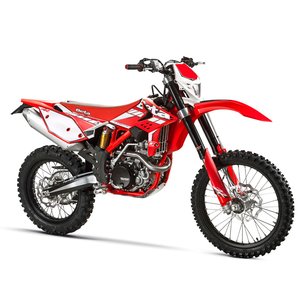Beta RR 430 (2015-2019): The Italian Dual-Sport Maverick That Refuses to Compromise
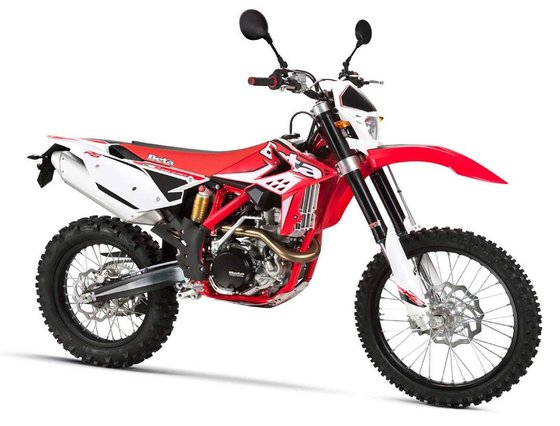
Introduction
The Beta RR 430 isn’t just a motorcycle—it’s a declaration of intent. From 2015 to 2019, this Italian enduro machine carved its niche as a street-legal off-roader that laughs at the idea of compromise. Whether you’re threading through single-track trails or navigating urban sprawl, the RR 430 delivers a raw, unfiltered experience that bridges the gap between competition-grade performance and real-world usability. After spending days wrestling it through muddy ravines, carving fire roads, and even commuting through traffic, I can confidently say this bike is a Swiss Army knife for riders who refuse to be pigeonholed.
Engine Performance: Controllable Fury
At the heart of the Beta RR 430 lies a 431 cc liquid-cooled single-cylinder engine that’s equal parts brute and ballet dancer. Beta’s engineers struck gold with this DOHC 4-valve mill, which churns out power in a way that feels almost contradictory—aggressively responsive yet remarkably manageable.
Key Impressions:
- Low-End Torque: The 11.95:1 compression ratio and 39 mm Keihin FCR-MX carburetor (yes, carbureted—more on that later) deliver instant throttle response. From idle, the bike pulls like a freight train, with peak torque arriving around 6,000 RPM. This isn’t a motor that needs to be screamed; it’s happiest chugging up rocky inclines at walking pace or lofting the front wheel over logs.
- Midrange Punch: Where the RR 430 truly shines is its midrange. Rolling on the throttle at 50 km/h (31 mph) in third gear sends the bike surging forward with a linear, addictive surge. It’s not the explosive hit of a 450 MX bike, but that’s the point—this powerband is usable, not terrifying.
- Top-End Restraint: Revving past 8,500 RPM feels almost redundant. Power signs off politely, encouraging you to short-shift and savor the meaty midrange.
The 6-speed transmission is a revelation. Gear ratios are spaced tighter than a neurotic librarian’s bookshelf, with sixth gear acting as a true overdrive for highway cruising. At 100 km/h (62 mph), the engine hums at a relaxed 5,500 RPM—impressive for a dirt-focused machine.
Carburetion Quirks:
Yes, it’s carbureted in a world drowning in fuel injection. But the Keihin FCR-MX is a masterpiece when dialed in. Cold starts require patience (thankfully, there’s backup kickstarting), but once warm, throttle response is crisp. Altitude changes? Bring a screwdriver. It’s old-school, but purists will love the tinkering potential.
Chassis & Suspension: Precision Meets Plushness
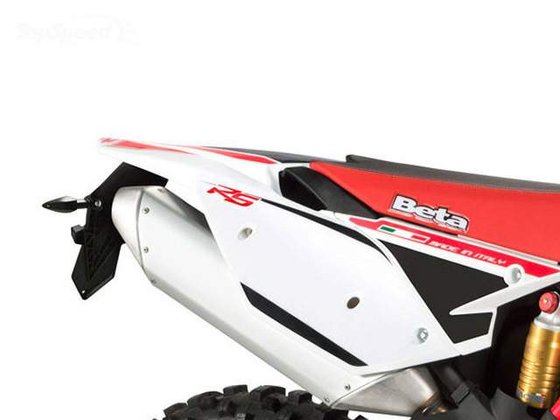
Beta’s Molybdenum steel frame is a work of art. The double-cradle design splits above the exhaust port, creating a stiff yet forgiving structure that dances beneath you. At 113 kg (249 lbs) dry, the RR 430 feels shockingly light—20 kg (44 lbs) lighter than a KTM 500 EXC-F of the same era.
Sachs Suspension Breakdown:
- Front: The 48 mm Sachs USD fork features adjustable compression and rebound damping. Out of the box, it’s set up for technical trail riding—plush on small bumps, firm enough to handle hard landings. Bottoming resistance is stellar thanks to 290 mm (11.4") of travel.
- Rear: The Sachs shock with high/low-speed compression adjustment is the star here. It soaks up square-edged hits like a sponge, yet remains composed during aggressive cornering. Linkage-less design? Don’t let that scare you—the rising-rate system provides progressive damping that rivals PDS systems.
On the Trail:
Flicking the RR 430 through tight switchbacks feels like cheating. The 1,475 mm (58.1") wheelbase and 320 mm (12.6") ground clearance let you pivot around obstacles with trials-bike agility. Stand up, weight the outside peg, and the bike carves ruts like a GSX-R on slicks.
Ergonomics: Comfort Meets Control
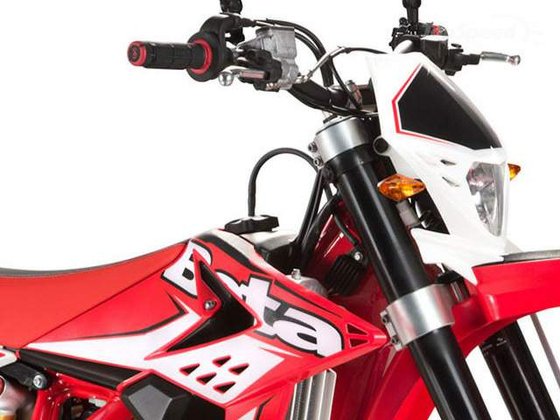
At 930 mm (36.6"), the seat height is intimidating on paper. But Beta’s secret sauce is in the narrow frame spars. Even at 5’8", I could flat-foot the bike by compressing the suspension slightly. The redesigned seat foam (softer than previous models) is a godsend—after 4 hours in the saddle, my backside wasn’t staging a mutiny.
Handlebar Setup:
The Race Edition handlebar pad and ProTaper-style bend offer a neutral riding position. At 807 mm (31.8") wide, it’s narrow enough to squeeze between trees but wide enough for standing control.
Footpegs:
Positioned 413 mm (16.25") high, the serrated pegs grip boots like Velcro. During steep descents, shifting weight rearward feels natural—no awkward contortions needed.
Off-Road vs. On-Road: A Dual Personality
Dirt Dominance:
- Tires: The stock Pirelli MT21s are 80% dirt, 20% street. In loose terrain, they dig trenches. On wet roots? Let’s just say you’ll learn throttle control quickly.
- Brakes: The 260 mm front rotor with twin-piston caliper offers strong initial bite. It’s overkill for pure enduro but perfect for hauling down from highway speeds.
Street Manners:
- Voyager GPS Unit: Beta’s Trail Tech accessory is a game-changer. Monitoring engine temp (which rarely exceeds 85°C/185°F thanks to the standard cooling fan) and plotting routes mid-ride? Yes, please.
- Mirrors: The fold-away design works… until you hit serious whoops. After 10 minutes off-road, they’re pointing at Saturn. Plan accordingly.
Competition: How the Beta Stacks Up
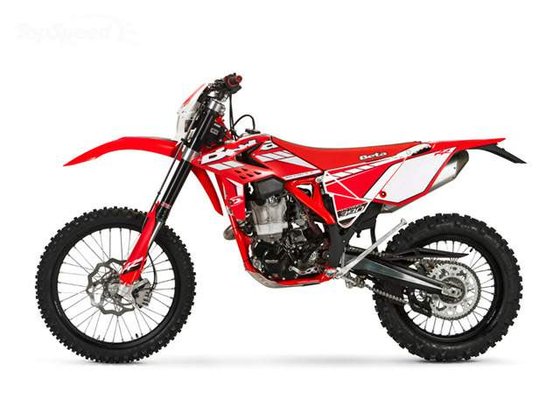
1. KTM 450 EXC-F (2015-2019):
- Power: KTM’s fuel-injected 450 has a sharper top-end rush.
- Weight: 111 kg (245 lbs) vs Beta’s 113 kg (249 lbs)—negligible difference.
- Suspension: WP units are stiffer, favoring faster riders. Beta’s Sachs setup is more forgiving for mortals.
- Verdict: Choose KTM for pure speed; Beta for versatility.
2. Husqvarna FE 450:
- Chassis: Same DNA as KTM but with a composite subframe. Lighter feel than Beta at low speeds.
- Maintenance: Husky’s FI system is fuss-free but lacks the Beta’s carburetor tunability.
- Verdict: A coin flip—Husky for tech, Beta for character.
3. Yamaha WR450F:
- Reliability: Yamaha’s bulletproof reputation is deserved.
- Weight: 123 kg (271 lbs) makes it feel portly compared to the Beta.
- Verdict: WR for durability; Beta for agility.
Maintenance: Keeping the Italian Stallion Healthy
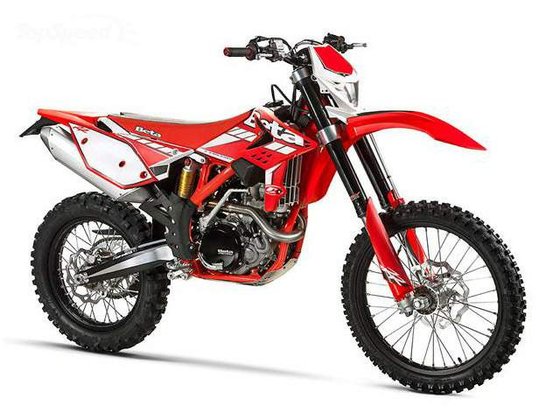
Oil Changes:
- Engine: 0.8L (0.2 gal) of 10W-50 every 15 hours. Use MOTOPARTS.store’s synthetic blend for better clutch longevity.
- Transmission: Same interval—don’t skip it!
Air Filter:
Side-access design means no tools required. Clean with MOTOPARTS.store’s biodegradable filter oil after every dusty ride.
Valve Checks:
Every 30 hours. Shim-under-bucket design is stable—expect minimal adjustment.
Cooling System:
- Replace coolant annually with MOTOPARTS.store’s silicate-free formula.
- Monitor fan operation—critical in slow technical sections.
Brake Upgrades:
Stock pads fade during prolonged downhill runs. MOTOPARTS.store’s sintered metal pads improve bite and heat resistance.
Conclusion: The Unrepentant All-Rounder
The Beta RR 430 isn’t perfect. Its carburetor demands patience, the mirrors are comedy props, and the stock tires belong in a museum. But none of that matters when you’re 50 km into a backcountry epic, GPS guiding you to vistas unknown, engine purring like a contented lion. This is a motorcycle that rewards skill, forgives mistakes, and laughs at the notion of “too extreme.”
Ready to personalize your RR 430? Explore MOTOPARTS.store’s curated selection of 300+ upgrades—from performance exhausts to grippy seat covers. Turn this Italian thoroughbred into your ultimate trail partner.
Ride hard, ride smart, and keep the rubber side down.
Specifications sheet
| Engine | |
|---|---|
| Stroke: | Four-stroke |
| Ignition: | DC-CDI with variable timing (Kokusan) |
| Starting: | Electric & Kick |
| Fuel system: | Keihin FCR-MX 39 mm |
| Lubrication: | Twin oil pumps with cartridge filter (separate engine/clutch oil) |
| Displacement: | 431 ccm |
| Configuration: | Single |
| Cooling System: | Liquid cooled with pump |
| Compression ratio: | 11.95:1 |
| Number of cylinders: | 1 |
| Features | |
|---|---|
| Extras: | ['Trail Tech Voyager GPS unit', '50-state street legal', 'Push-button seat release', 'Tuck-away mirrors', 'Rear suspension linkage', '300+ accessories available'] |
| Dimensions | |
|---|---|
| Wheelbase: | 1490 mm (58.7 in) |
| Dry weight: | 112 |
| Seat height: | 940 mm (37.0 in) |
| Fuel reserve: | 1.3 L (0.3 US gal) |
| Footrest height: | 413 mm (16.3 in) |
| Ground clearance: | 320 mm (12.6 in) |
| Fuel tank capacity: | 8.0 L (2.1 US gal) |
| Drivetrain | |
|---|---|
| Clutch: | Wet multi-disc |
| Final drive: | chain |
| Transmission: | 6-speed |
| Rear sprocket: | 48 |
| Front sprocket: | 15 |
| Final drive ratio: | 15:48 |
| Primary drive ratio: | 31:73 |
| Maintenance | |
|---|---|
| Rear tire: | 140/80-18 |
| Engine oil: | 10W40 |
| Front tire: | 90/90-21 |
| Brake fluid: | DOT 4 |
| Spark plugs: | NGK LKAR8A-9 |
| Coolant capacity: | 1.3 |
| Engine oil capacity: | 0.8 |
| Gearbox oil capacity: | 0.8 |
| Chassis and Suspension | |
|---|---|
| Frame: | Molybdenum steel double cradle (split above exhaust port) |
| Rear wheel: | 2.15 x 18 |
| Front wheel: | 1.60 x 21 |
| Rear brakes: | 240 mm disc, 1-piston caliper |
| Front brakes: | 260 mm disc, 2-piston caliper |
| Rear suspension: | Sachs shock w/ adjustable rebound & hi/low-speed compression |
| Front suspension: | 48 mm Sachs USD fork, adjustable compression/rebound (TFX tech) |
| Rear wheel travel: | 290 mm (11.4 in) |
| Front wheel travel: | 290 mm (11.4 in) |



